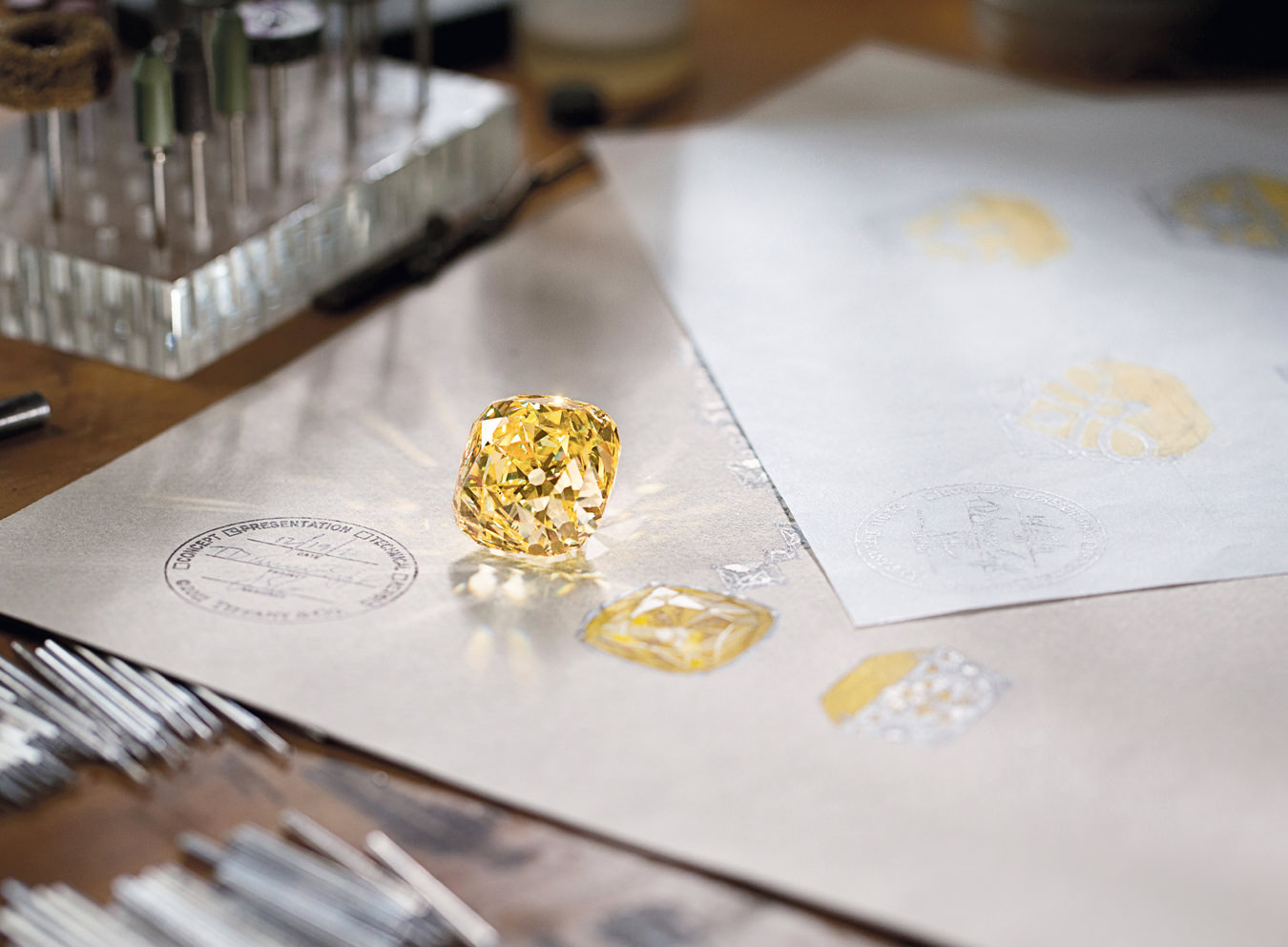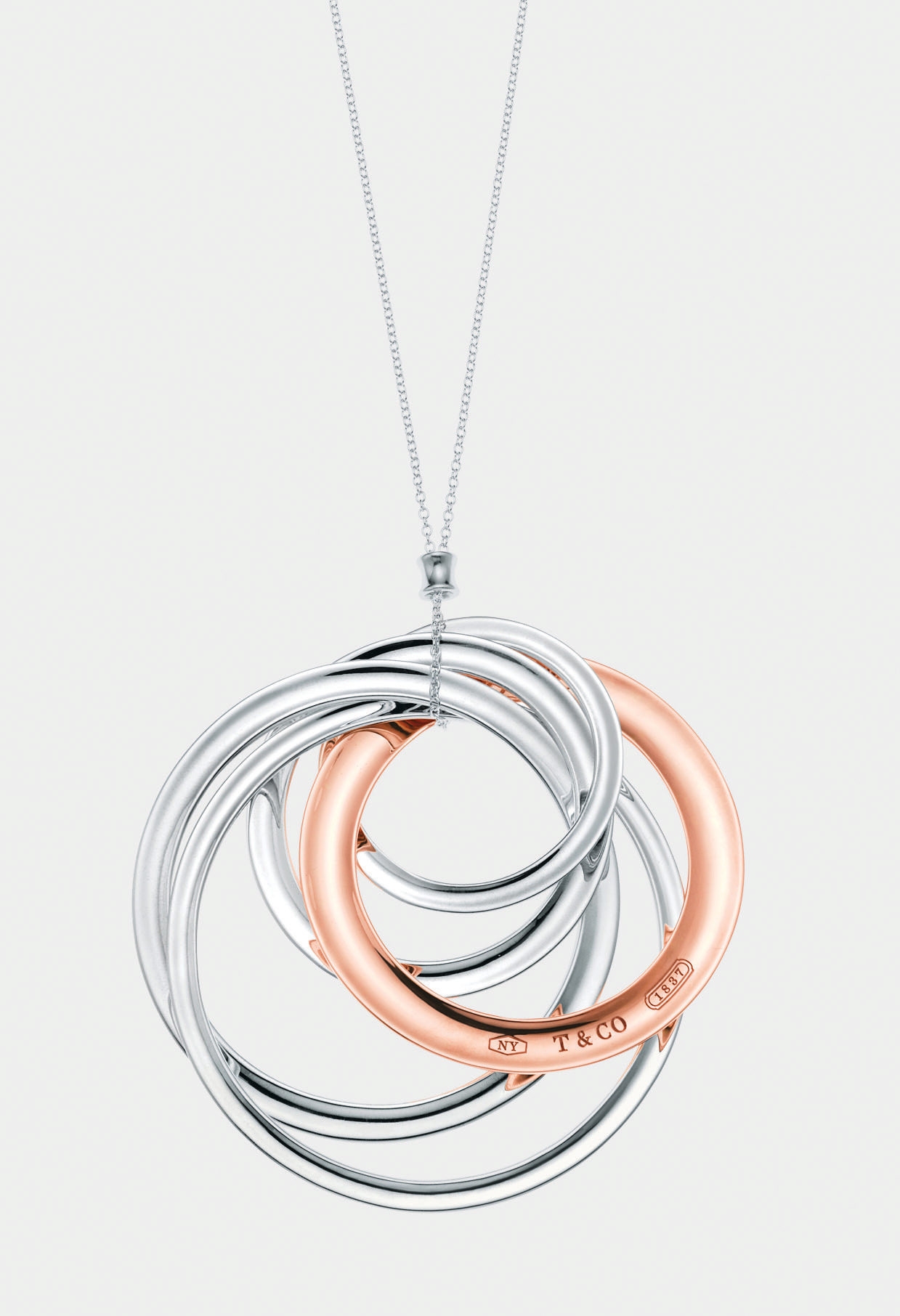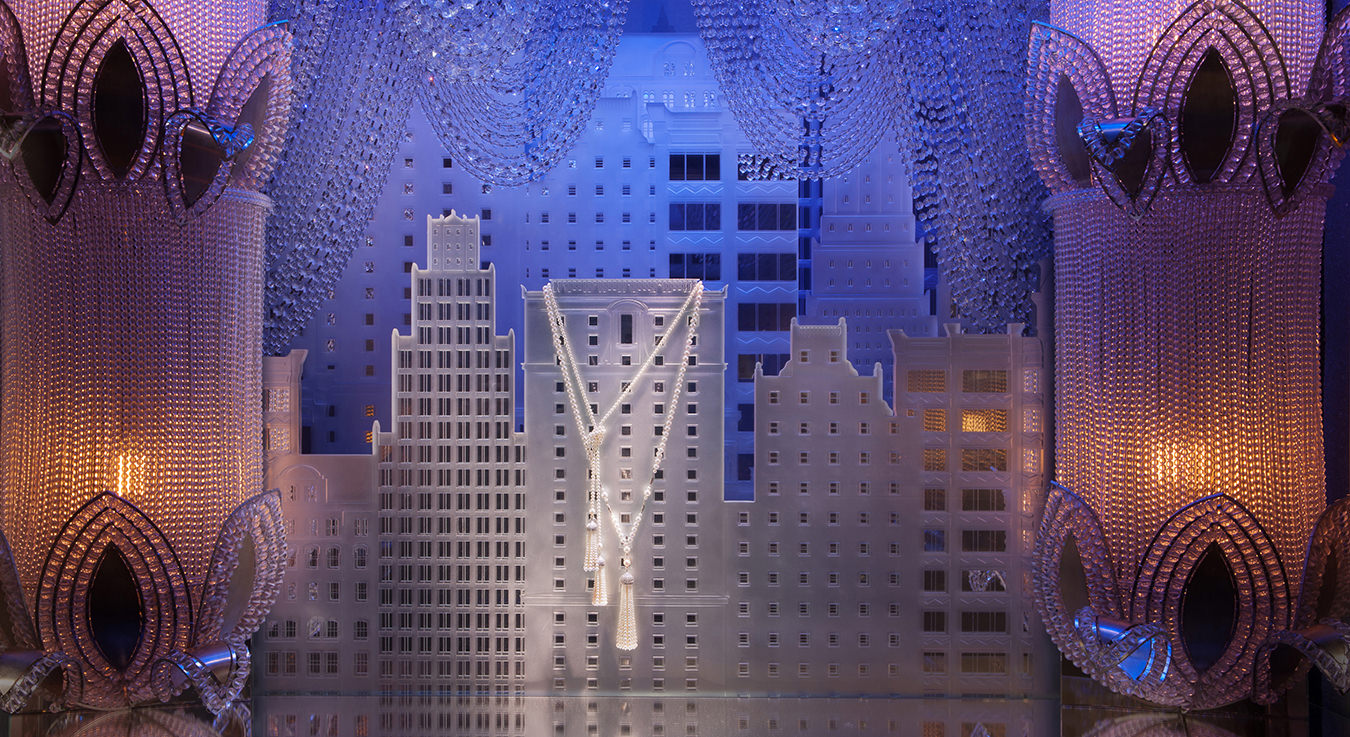The Tale of the Tiffany Diamond
Prized proportions.

Every storied jewellery house has that one show-stopping, iconic gem that embodies the brand, the jewel’s sparkling past inextricably linked with that of the maison. For Tiffany & Co., it is undoubtedly the eponymous Tiffany Diamond: a spectacular cushion-shaped, 128.54-carat fancy yellow diamond that has racked up its share of milestones in its 139-year journey with the New York house.
“The Tiffany Diamond is a crucial part of our DNA,” says Melvyn Kirtley, Tiffany & Co.’s chief gemologist, vice-president of high jewellery, and one of the few people in the company who is allowed to handle the stone. The Tiffany Diamond first entered the house’s vaults in 1878 and “was symbolic in forming our identity as the world’s leading diamond purveyor and authority,” says Kirtley. Since then, the gem has inspired many Tiffany & Co. collections.
Measuring one inch wide by seven-eighths of an inch high, the stone is one of the world’s largest yellow diamonds and is, quite simply, breathtaking. When customers set eyes on it, there is “a real visceral reaction,” according to Kirtley. “They’re entranced by its magnetism, which comes from its remarkable colour, cut, beauty, and size. You can really dive into it.”
Its allure doesn’t seem to wane, either. When Kirtley was general manager of the Fifth Avenue Tiffany & Co. boutique, he was tasked with removing the diamond from its display case every night. “I had the same amazement and fascination each time I looked at it,” he recalls.

The public can see the famous stone at Tiffany & Co.’s Fifth Avenue flagship store, where today the gem’s permanent home is on the main floor in a specially designed vitrine vault. On rare and important occasions, the diamond travels. Paris, Beijing, and Dubai have been lucky recipients of a visit, with Vancouver up next. It will be the first time the jewel has been in Canada.
Discovered in 1877 as a 287.42-carat rough in South Africa’s Kimberley mine, the stone was purchased there for $18,000 (U.S.) the following year by Tiffany & Co. co-founder Charles Lewis Tiffany. It was then sent to Paris, where, under the supervision of the house’s chief gemologist, Dr. George Frederick Kunz, it was studied for a year. Another year was dedicated solely to cutting the stone. Achieving the ultimate cut was vital, and the stone was given 82 facets—two dozen more than a traditional brilliant cut. “Diamonds are always cut to maximize light return,” says Kirtley. “The idea was to allow the stone to take the light and hold it. That timing, that split of a second to give the light back so it makes an impact—it was a remarkably clever facet arrangement, especially in the 1870s.”
It’s no surprise that the Tiffany Diamond secured Charles Tiffany’s reputation as the King of Diamonds. In the mid-19th century, diamonds’ popularity in the U.S. was still in its infancy, with the precious stones worn mostly by European royalty. That changed when Charles Tiffany introduced exquisite European gems and objets to America. Such splendour had never been seen in the U.S., and Tiffany & Co. became the go-to jeweller for the country’s first millionaires. The families of industry titans—the Astors, Vanderbilts, and Pulitzers—began to attend New York society balls and weddings bedecked in Tiffany & Co. creations.
Measuring one inch wide by seven-eighths of an inch high, the stone is one of the world’s largest yellow diamonds and is, quite simply, breathtaking.
From the start, the Tiffany Diamond had star power. In 1893, it was a highlight at the World’s Columbian Exposition in Chicago, where Tiffany picked up an unprecedented 56 prizes. A few special appearances followed at major fairs in Chicago and New York. But the Tiffany Diamond has only graced the windows of the Fifth Avenue flagship once. For the winter 1955 holiday showcase, the house’s celebrated window designer, Gene Moore, set the stone in the palms of a floating gold-wire angel that was illuminated against a black backdrop. Minimally decorated, the Tiffany Diamond did all the talking.
Only two people have ever worn the gem. The first was Mary Whitehouse, who attended the 1957 Tiffany Ball in Newport, Rhode Island, wearing the jewel in a diamond necklace. Four years later, it was used in publicity shots for Breakfast at Tiffany’s, worn by its most celebrated ambassador, Audrey Hepburn. The fiery stone was set in a wonderful swirling diamond necklace, its magnificence so memorable that Hepburn reportedly later wrote to the maison, borrowing from the poet John Keats: “A thing of beauty is a joy forever.”

Hepburn’s necklace, known as the Ribbon Rosette, was created by the renowned jewellery artist Jean Schlumberger. Whimsical and witty, the French jeweller began working with Tiffany & Co. in 1956; between then and his retirement in the late 1970s, he created some of the house’s most iconic designs in his mezzanine studio in the Fifth Avenue flagship. Famed tastemakers including Vogue editor Diana Vreeland, Jacqueline Kennedy Onassis, and Elizabeth Taylor were fans. Schlumberger, like Whitehouse and Hepburn, is among the handful of figures who are linked to the Tiffany Diamond.
In 1995, the Musée des Arts Décoratifs paid homage to Schlumberger and his poetic, nature-inspired style. The Tiffany Diamond travelled to Paris, where it took on the character of Schlumberger’s work Bird on a Rock, with a bejewelled bird perched on the corner of the enchanting stone, ready for flight.
The Tiffany Diamond continues to rack up the mileage, making appearances at the likes of the maison’s store openings on Paris’s Champs-Élysées and in Tokyo in 1996, with a stop in 2006 at the Bejewelled by Tiffany exhibition at London’s Somerset House. In 2012, to mark the house’s 175th birthday, the gem was set with 100 carats of white diamonds in a glorious necklace. It made stops around the world for the anniversary.
That the Tiffany Diamond occasionally leaves its Big Apple home is important. “It’s a wonderful spokesperson for us,” says Kirtley. “It’s like taking a piece of the New York boutique, the heart and soul of our business. The stone creates this magnitude effect and takes Tiffany’s core to our customers.”
Come November, the Tiffany Diamond will continue that journey, when its fire and verve light up the Vancouver boutique. Says Wendy Eagan, vice-president of Tiffany & Co. Canada: “It’s only fitting that we showcase the Tiffany Diamond in Vancouver, an international city with immense natural beauty to match that of the stone itself.”
Visitors will see the stone in its current form, set within that dazzler of a white-diamond necklace—the latest facet of a diamond that will continue to inspire awe.
This story was originally published September 1, 2017.
_________
Never miss a story. Sign up for NUVO’s weekly newsletter.








